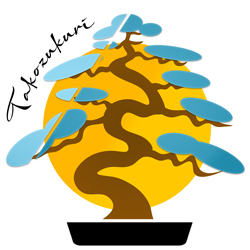Takozukuri Style: The Raft Style Bonsai
Definition and Origins

The Takozukuri style, known as the "raft style" in English, is a unique form of bonsai that mimics the appearance of naturally fallen trees that continue to grow horizontally, with new branches rising vertically from the lying trunk. This style evokes the image of trees toppled by wind or erosion, but persisting to live and develop in a horizontal orientation.
Distinctive Characteristics
- Horizontal Trunk: The trunk of the Takozukuri bonsai is positioned horizontally or nearly horizontally in the pot, imitating a fallen tree.
- Vertical Branches: Branches develop along the lying trunk, growing vertically or obliquely upwards, forming new miniature "trees."
- Roots and New Shoots: Branches emerging from the horizontal trunk often develop their own roots where they touch the soil, creating the illusion of a series of interconnected trees.
- Balance and Realism: The style aims to create a natural and realistic balance, with a branch arrangement that reflects how a fallen tree might regrow in nature.
- Pot and Presentation: The pot for a Takozukuri bonsai is usually long and shallow, providing enough space for the horizontal trunk and emerging branches.
Species Selection
Species with flexible trunks and vigorous growth, capable of producing aerial roots or offshoots from the trunk, are ideal for the Takozukuri style. Junipers, elms, and certain pines are frequently used.
Maintenance and Cultivation Techniques
- Pruning and Pinching: Pruning is essential to maintain the shape of the vertical branches and to encourage balanced growth along the lying trunk.
- Wiring: Wiring can be used to delicately position the emerging branches and to help form their structure.
- Repotting and Substrate: A well-draining substrate is important, as are periodic repottings to support the health of the extended tree.
Conclusion
The Takozukuri style is a captivating interpretation of resilience and adaptation in nature. It represents a tree's ability to persevere and adapt to new orientations after disruptive events, offering a unique perspective on strength and flexibility in the natural world.

















